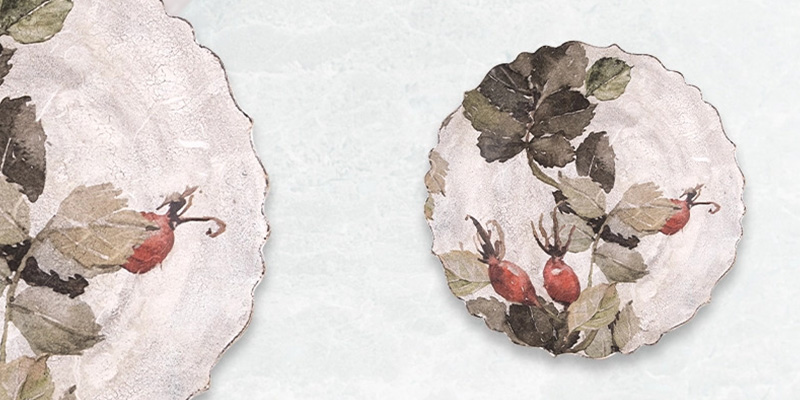REDESIGN YOUR KITCHEN WITH CADENCE BRASS PAPER

With Cadence rice paper, you can add an elegant touch to your kitchen decoration and redesign your kitchens with its durable and stylish feature.
How to Apply Rice Paper on Tables, Chairs and Tiles?
- First of all, paint the surface cleaned from oil, dirt and moisture with Cadence Hybrid Multisurface white paint and wait 24 hours.
- Apply Cadence decoupage plus adhesive on the tiles with a brush.
- Remove the gelatin from the brass papers, place them on the tiles and glue them from the center outwards so that there are no air bubbles and gaps.
- At the end of the application, you can apply decoupage plus glue to use as varnish.
Decoupage application on hard surfaces such as tables and chairs is similar to the application on tiles. You can add integrity to your designs by painting the areas where decoupage is not applied with Cadence Hybrit Multisurface paints.
Steps to apply decoupage to tables and chairs:
- If you are using an old table or chair, clean the surfaces and sand if necessary.
- For a better result, paint with Hybrid Multisurface to match the brass decoupage background.
- Prepare materials: decoupage papers, scissors, decoupage plus glue, sponge sander, brush.
- Choose the pattern or patterns you want.
- Make sure that the pattern you have chosen is correctly sized and shaped to fit the surface of the table and chairs.
- If you want to use a certain part of the pattern, you can moisten it with a brush and tear it off by hand to get a natural look.
- Apply the adhesive as you would for tiles and glue the product from the center outwards.
- Once dry, you can start using the table and chairs wherever you want.
Tips and Tricks of Brass Decoupage for Glass, Tray and Porcelain Objects
You can also renew the glass objects in your kitchen that are left alone, scratched or that you do not want to use in their current state. Since the applications to be made on glass objects will be made from the back surface, they will not come into contact with the food you will put inside. For this reason, you can design a tea set or breakfast set of your own design.
When Applying Transfer to Glass Surfaces:
- You can use more than one rice paper on the surface to be applied. After moistening and wetting the fibrous rice surface with the help of a brush, tear it off with your hand.
- Apply decoupage plus adhesive to the cut paper top surface with a brush.
- Place it on the glass in the direction of the adhesive applied top surface.
- Glue well from the center outwards to avoid air bubbles.
- Apply decoupage plus again on the back side of the transfer with a brush.
- The same process is applied to the part of the varank rice paper to be combined and drying can be done with the help of a dryer after application.
- Cut the overflowing parts of the transfer with sponge sandpaper.
- Paint the back surface of the glass first with white acrylic glass paint and then with a different color paint of your choice to make the patterns clearer and more permanent.
- Prevent brush strokes by painting with vertical strokes with a pompom.
Transfer Application for Trays and Porcelain Products:
You can give a completely different look to your trays that are yellowed, scratched or you want to renew, and your porcelain that you can’t afford to throw away from your trousseau.
- For the porcelain plate and tray pattern to hold better, you can paint a layer after sanding.
- Apply the decoupage plus glue directly onto the tray or porcelain, as you would for painting tiles.
- Applying the entire product without leaving any gaps prevents the formation of air bubbles.
- Apply in such a way that no air bubbles form. Apply glue again on the brass decoupage.
- The edges of the applied object can be painted in a color compatible with the pattern.
If desired, Cadence liquid wax can be used for both aging and varnish functions.